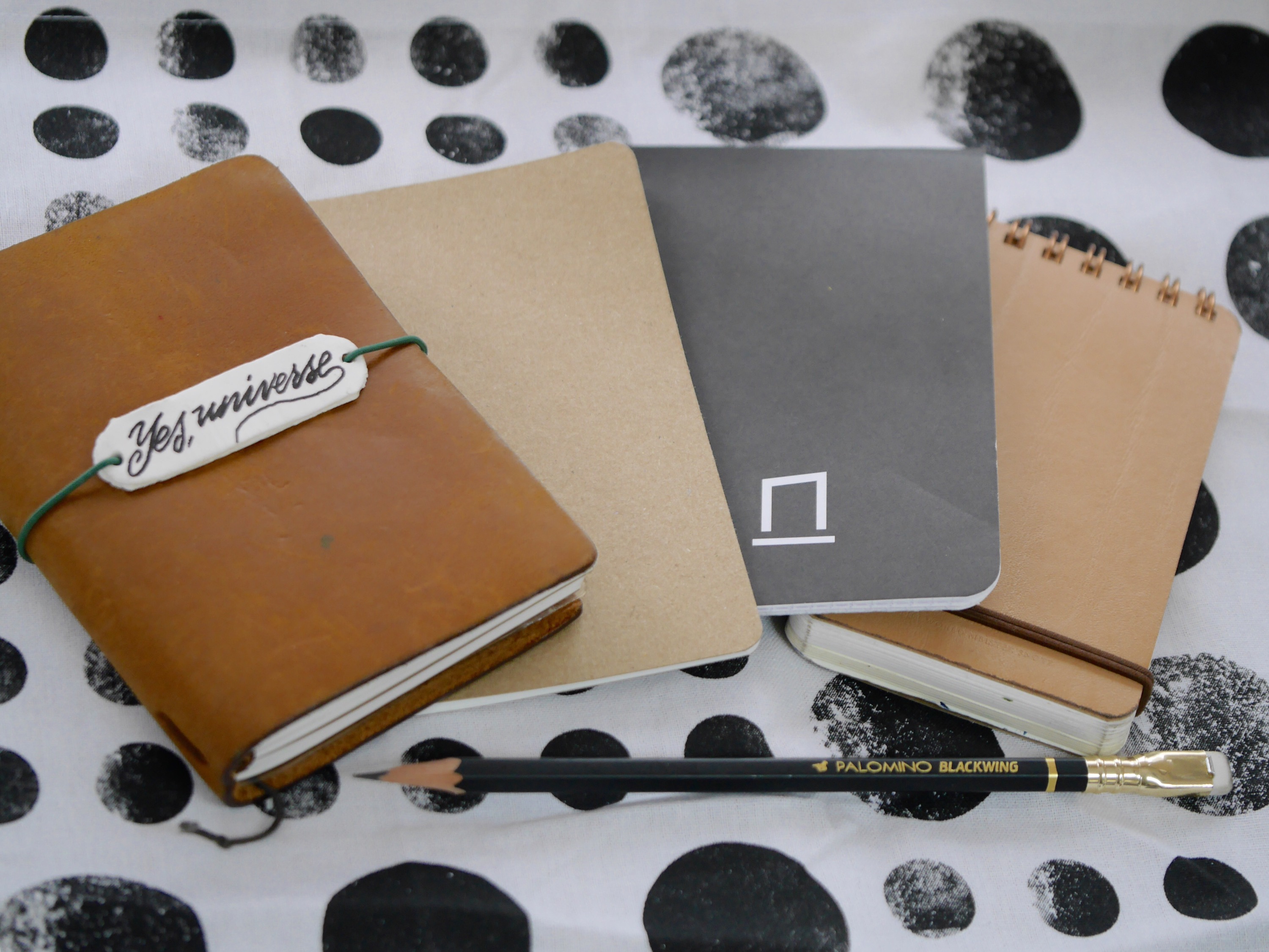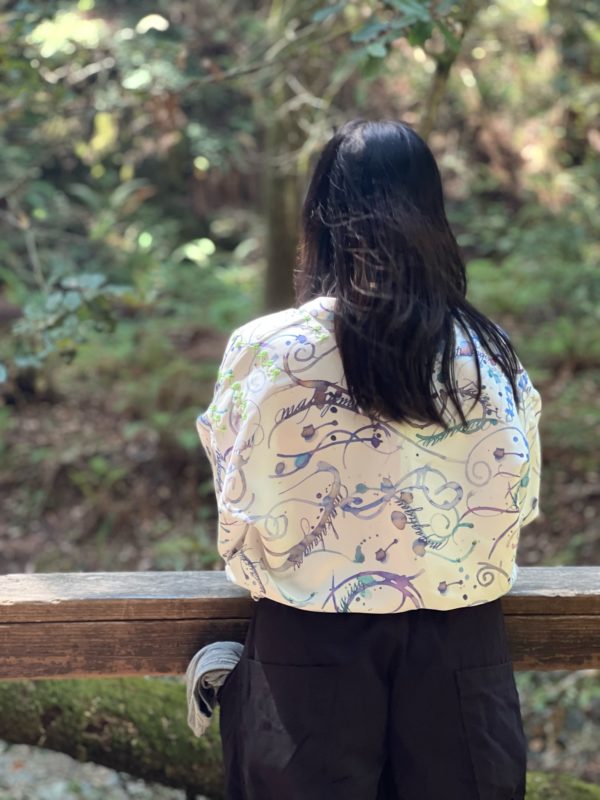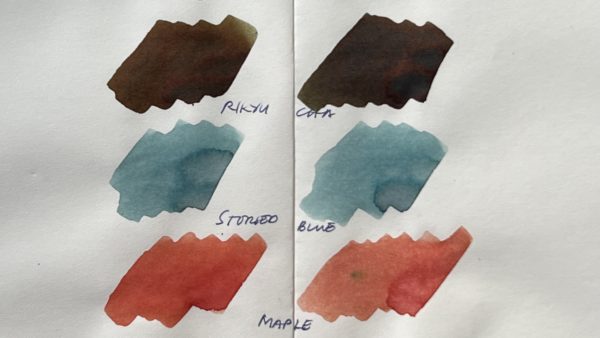When the ballpoint took over, fountain pens graduated to the special shelf, where they hung out with the fancy china. From everyday tools, they became markers for significant occasions. Â Back then, people favored fine points, for compact writing on lightweight onionskin, perfect for letters in the mail. Then medium and broad nibs took over the show. If you ask anyone today to imagine how a fountain pen writes, they would see a bold, juicy, flourished signature.
Those who write in Nihongo, Mandarin, even Thai, and other ideographic or what I think of as “compressed drawing while writing” languages, usually choose fine and extra fine nibs. An extra fine nib packs many strokes to a single character, with the character remaining legible. (It’s rare to find a vintage Japanese pen with a broad or stub nib.)

This mini-obsession with fine points has continued in the wider world of Japanese gel pens. Uni, Pilot, Platinum, and other manufacturers regularly update their lines with even finer versions of their current models. Pilot’s Hi-Tec-C added a 0.25 to their 0.4 and 0.3. Uni trumped everyone with a 0.18 Uni-ball Bit Signo. Platinum recently added a 0.2 EF to the Preppy, its school fountain pen.

Fine points with fast-drying ink can make ordinary paper look good. Lines don’t feather as much. Premium paper gives added crispness to fine lines, always a plus for legibility. Â But there’s not much of a market for premium paper. Most of the notebooks and pads easy to hand, not to mention forms, checks, and printed documents, aren’t fountain pen-friendly, and usually don’t need to be.
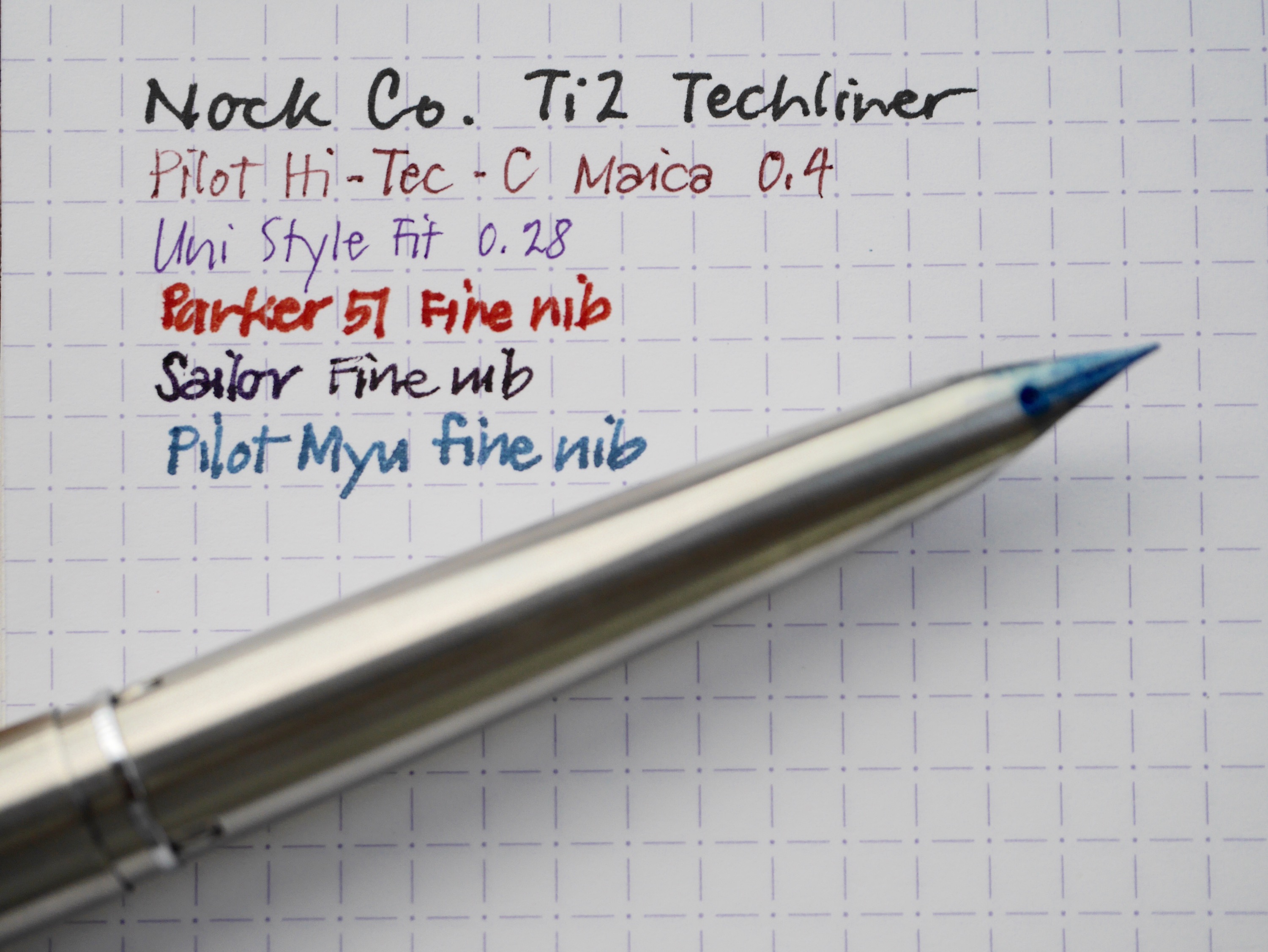
Fountain pen sales are on the rise. So are smartphone sales. Perhaps the need to balance our lives comes with the need to balance our tools. Â As more people discover fountain pens and use them more often, however, more frustration can result. A medium nib that writes expressively in a journal can feather horribly in a daily to-do cahier.
I believe that’s why preferences are swinging back to fine and extra fine (and in the case of Japanese makers, ultra extra fine). Â Even needlepoints are becoming popular as a nibmeister grind. The user gets all the analog goodness of a fine writing instrument without sacrificing everyday utility.

Amongst modern pen brands, no one has more variety in fine nibs than Nakaya. Not only can you choose a fine nib in ruthenium, rose, rhodium or yellow gold finish, you can also opt for two-tone, elastic, extra fine or super extra fine.

Platinum has a soft fine that qualifies as semi-flex, and an ultra extra fine that manages to still be smooth on paper.

Most pen brands will have an extra fine option. I like the Extra Flessibile EF of Omas. It’s closer to a Japanese medium, but capable of line variation close to vintage nibs.

Franklin-Christoph offers a Masuyama needlepoint, among other grinds. I call these “Masuyajim” because Jim Rouse, F-C’s resident nibmeister, gives all the nibs a final smoothing before giving them to their new owners. TWSBI’s stock extra fine nib isn’t bad at all.
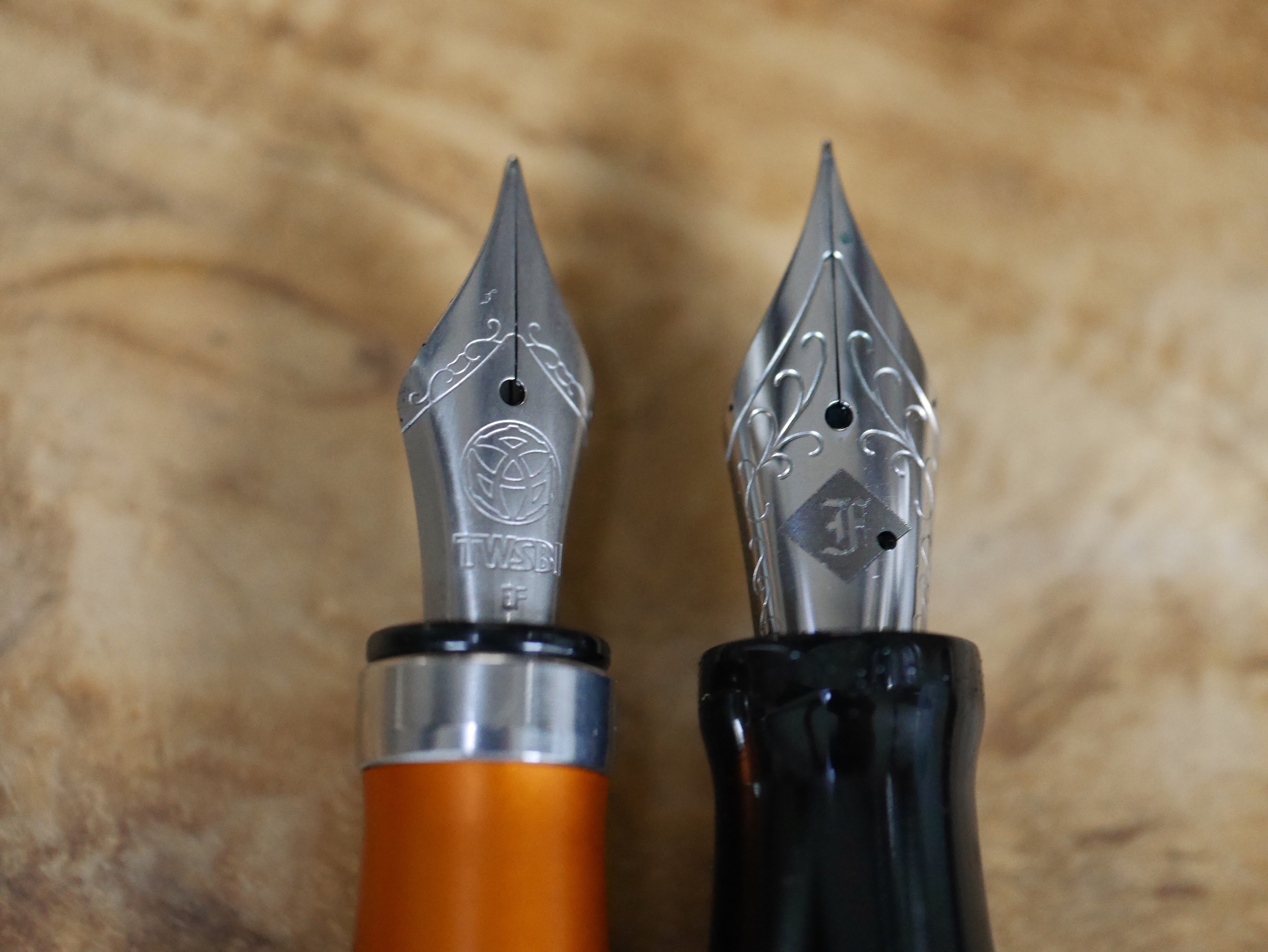
My favorite fine nibs are vintage, and all of them are Waterman.


With the demand and resulting increasing availability of fine, extra fine, and needlepoint nibs, now’s the best time to take one for a spin, and try it for everyday carry. Especially with the right ink, a fine nib can be just the thing to add flourish to your everyday.
What’s your favorite fine/extra fine/super extra fine/mindblowingly extra extra fine nib?
Links to finer things:
Mike Masuyama (“Mike It Work!”) does great needlepoint grinds.
Shawn Newton of Shinobi fame does nib grinds as well.
Cult Pens has the EF Pilot Penmanship pen, a great inexpensive introduction to extra fine nibs.

